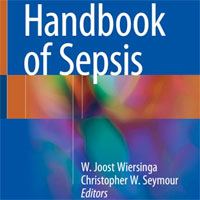Tag: sepsis
Epidemiology of Myocardial Injury in Trauma Patients
Pathological Troponin concentration elevation occurs in 7% of all trauma patients and it identifies the seriously injured high-risk cohort with worse outcomes than expected based on injury severity. The timing of the... read more
Fungal Infections Surveillance and Prevention in the NICU
It was determined that colonization and development of invasive mycoses among newborns are most often caused by Candida sp., while the detection of filamentous fungi remains sporadic. The etiological role of Malassezia... read more
Prognostic Predictor Using Lactate-to-Albumin Ratio in Patients with Cirrhosis and Sepsis
Lactate-to-albumin ratio (LAR) is strongly associated with poor prognosis in patients with cirrhosis and sepsis. LAR is a promising prognostic marker that provides clinicians with a simple and effective tool for risk... read more
Unlocking the Predictive Power of Nutritional Scores in Septic Patients
This study highlights the significant prognostic utility of nutritional status evaluation in septic patients admitted to internal medicine wards. Among the tools evaluated, the mNUTRIC score—likely because of its dual... read more
Dynamic Nomogram for AKI Prediction in ICU Patients with AHF
After strict screening, 1338 patients with acute heart failure (AHF) were included in the derivation set, and 3,129 in the validation set. Sepsis, use of human albumin, age, mechanical ventilation, aminoglycoside administration,... read more
Risk Factors for Impairments in Quality of Life and Activities of Daily Living in Survivors of Critical Illness
This systematic review was able to identify that survivor of critical illnesses experienced changes in worsening quality of life, with impairment also in their functionality in terms of basic and instrumental activities of... read more
Unfractionated Heparin May Improve Near-term Survival in ICU Patients with Sepsis Pneumonia
This study found that early administration of heparin, particularly in sufficient doses (Heparin Sodium 5000 units/mL, 1 mL per dose, three times daily (TID)) for more than 7 d, was associated with reduced near-term mortality... read more
Predicting MODS in Trauma-induced Sepsis with Machine Learning Models
The nomogram and machine learning models provide enhanced predictive accuracy for multiple organ dysfunction syndrome (MODS) in trauma-induced sepsis patients compared to traditional scoring systems. These tools, accessible... read more
Mental Health in the First Year After ICU-treated Sepsis
Existing data on the prevalence of mental health impairments (MHI) following sepsis and intensive care are based predominantly on self-reported symptoms assessed by using questionnaires, small sample sizes, and clinically... read more
Association Between the Lactate-to-Albumin Ratio (LAR) Index and AKI Risk in Critically Ill Patients with Sepsis
Lactate-to-albumin ratio (LAR) is an emergency predictive indicator of sepsis-related mortality. An elevated LAR is associated with poor outcomes in critically ill patients. However, its predictive value for acute kidney... read more
Which Antimicrobial Treatment for Patients with Bloodstream Infection During ECMO Support?
Enterococcus sp. was incriminated in about a third of BSI among patients with ECMO support. High appropriateness would only be obtained with piperacilline/tazobactam or carbapenems in association with vancomycin while 3rd... read more
Unlocking the Predictive Power of Nutritional Scores in Septic Patients
The study highlights the mNUTRIC score's practicality and reliability in assessing nutritional and inflammatory risks in septic patients, particularly in non-ICU settings. These findings suggest its potential utility... read more
Cumulative Fluid Balance During the First Three ICU Days in Septic Patients with Heart Failure
In septic patients with HFpEF, positive fluid balance of CFB-day1 might improve the prognosis of patients. However, from the second day, fluid overload was associated with poor prognosis. Therefore, we propose that on... read more
Prescribing Patterns and Effectiveness of Ceftolozane/Tazobactam in Immunosuppressed Patients
Treatment with Ceftolozane/Tazobactam (C/T) resulted in a high rate of clinical success in this real-world cohort of immunosuppressed patients, despite dosing that frequently deviated from labelled dosing. Pseudomonas... read more
VEGFR1 Genetic Regulation During Sepsis and Association with ARDS Susceptibility
We identified biologically relevant protein quantitative trait loci (pQTLs) of vascular endothelial growth factor receptor 1 (VEGFR1) levels during sepsis in TCF20 and identified CYP2D6 as the gene more biologically implicated.... read more
Rapid and Accurate Sepsis Identification Using AI
This study demonstrates that by providing streamlined predictions using CBC+DIFF data without requiring extensive clinical parameters, the AI-CDSS can be seamlessly integrated into clinical workflows, enhancing rapid, accurate... read more
Managing Recurrent Septic Shock – Dual Blood Purification with CytoSorb and oXiris
This case report presents a patient with recurrent septic shock who experienced significant clinical improvement after receiving adjunctive treatment with a combination of continuous renal replacement therapy (CRRT) using... read more
Cellular Therapy with Mesenchymal Stromal Cells in Sepsis
Cellular therapy with mesenchymal stromal cells (MSCs) is a promising therapeutic modality in sepsis. Positive effects are mainly associated with frequent infusions and the dose of 1 × 106 cell/kg. Larger scale studies... read more
Association Between Early Ondansetron Use and Sepsis Risk in ICU Patients
In both patients with SOFA 3, early ondansetron use was correlated with a reduced risk of sepsis. Patients with early ondansetron use had lower odds of experiencing sepsis than patients without early ondansetron use, which... read more
Handbook of Sepsis
This recently released practically oriented book provides an up-to-date overview of all significant aspects of the pathogenesis of sepsis and its management, including within the ICU. Readers will find information on... read more

Code Sepsis – Early Decompensation and Predictors
Early recognition and management of sepsis within the first hour of a sepsis alert is critical for patient survival, requiring healthcare providers to be trained to identify "red flag" symptoms like rapid breathing (tachypnea)... read more
Predicting Sepsis Outcomes – Efficacy of Early Warning Scores
In resource-limited settings, NEWS proved to be the most effective tool for early risk stratification in sepsis patients. Its adoption could significantly enhance sepsis management and improve outcomes in emergency departments... read more









